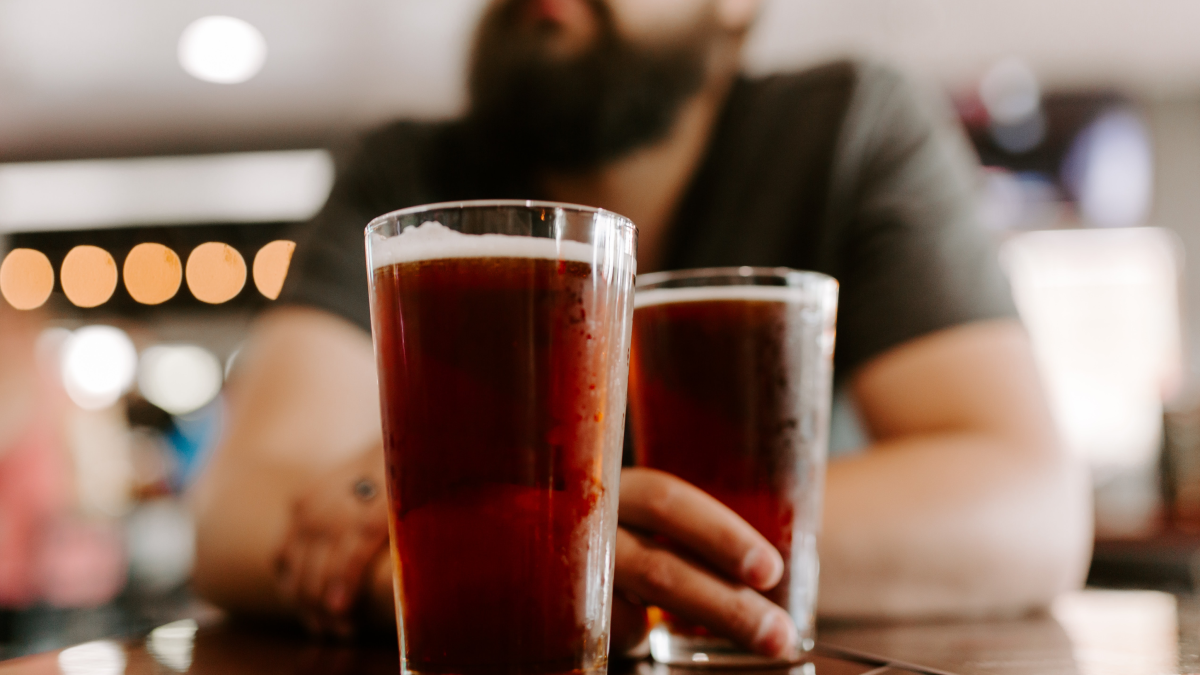1. You’re Not Tracking What You Eat
Tracking your meals is one of the most effective strategies for weight management, yet it's often overlooked. Many people believe they’re eating within their calorie limits, but small oversights can add up quickly. For instance, a handful of nuts, a drizzle of dressing, or even that second spoonful of peanut butter can contain far more calories than you expect. Healthy snacks like smoothies, granola bars, or avocado toast, while nutritious, may also be calorically dense. Without accurately tracking your intake, it’s easy to underestimate your consumption and unknowingly sabotage your progress.
Studies show that people who track their meals are more likely to reach their weight loss goals compared to those who don’t. Apps like MyFitnessPal or Lose It! make this process much easier by providing a database of foods with their calorie values. These tools can also help you recognize patterns in your eating habits, such as consistently snacking late at night or overindulging on weekends.
Tip: Tip: Start with a simple food log. Record everything you eat and drink throughout the day, no matter how small it seems. This includes condiments, beverages, and "tastes" you might take while cooking. Accuracy is key—use a kitchen scale or measuring cups for precise portion sizes. Over time, this habit will give you a clearer picture of your daily intake and empower you to make informed adjustments.
If you’re dining out or eating packaged foods, pay close attention to portion sizes. Many restaurant meals and packaged snacks contain multiple servings, meaning the calorie count may be double or triple what you initially thought. Tracking your food consistently not only helps you stay accountable but also enables you to identify areas where you can cut back without feeling deprived.
Finally, be patient and flexible. It may take a few days or weeks to get into the habit of logging everything, but the insights you gain are well worth the effort. Tracking isn’t about perfection—it’s a tool to help you understand your eating habits and create sustainable, long-term change.

2. You’re Overestimating Your Calorie Burn
While exercise is an essential part of any weight loss journey, many people fall into the trap of overestimating the calories they burn during a workout. Gym machines like treadmills, ellipticals, and stationary bikes are designed to provide a quick estimate of your calorie burn. However, these estimates can be wildly inaccurate. These machines often use generic formulas based on your age, weight, and speed, without accounting for other important factors such as your fitness level, muscle mass, or the intensity of your workout. As a result, the calorie count displayed on the machine could be much higher than what you actually burned.
Furthermore, many individuals assume that a single workout session is enough to create a significant calorie deficit for weight loss. However, it’s easy to overestimate the number of calories you’ve burned, which can lead to mistakenly thinking you have room to eat more. For example, a person might assume that burning 300 calories during a 30-minute workout means they can eat an extra 300 calories or more without affecting their progress. In reality, even after an intense session, it’s not uncommon for people to still consume more calories than they burned during the workout.
Solution: To improve accuracy, consider using wearable fitness trackers like a Fitbit, Apple Watch, or Garmin. These devices offer more personalized estimates by tracking heart rate and movement patterns throughout the day. Alongside consistent exercise, it’s crucial to focus on mindful eating and portion control. Ensure your caloric intake is aligned with your goals by tracking meals and snacks. By combining accurate calorie tracking with regular exercise and healthy eating, you’ll have a clearer path to achieving your weight loss goals.

3. You’re Not Getting Enough Protein
Protein is one of the most crucial macronutrients for anyone looking to lose weight or improve their body composition. It plays a key role in muscle repair, growth, and maintenance. If you're not consuming enough protein, you may find yourself feeling hungrier throughout the day, which can easily lead to overeating. Unlike carbohydrates and fats, protein helps to increase satiety, meaning it keeps you feeling fuller for longer. This is especially important when trying to maintain a calorie deficit for weight loss, as protein helps to curb your appetite and reduce cravings.
A lack of protein can also negatively impact your muscles. When you engage in exercise, particularly strength training, your muscles experience small tears that require protein to repair and grow. Without an adequate protein intake, your body may struggle to recover, which can hinder your progress and muscle-building efforts. Additionally, inadequate protein intake can result in muscle loss, slowing down your metabolism and making it more difficult to burn fat.
Solution: To support muscle growth and control hunger, aim to consume 20-30 grams of protein with each meal. This amount is generally enough to stimulate muscle protein synthesis, which is vital for muscle repair and growth. Excellent sources of protein include lean meats like chicken, turkey, and fish, as well as plant-based options like tofu, beans, and lentils. If you struggle to meet your protein goals through food alone, consider adding a high-quality protein supplement such as whey protein or plant-based protein powder to your daily intake. This can help ensure you're getting enough protein to fuel your workouts, prevent muscle loss, and keep hunger at bay.

4. You’re Neglecting Sleep and Stress
Sleep and stress management are two often overlooked but critical factors in any weight loss journey. Many people focus solely on diet and exercise, forgetting that inadequate sleep and chronic stress can significantly derail progress. Sleep deprivation, in particular, has a direct impact on hormones that regulate hunger. When you're not getting enough rest, levels of ghrelin, the hormone that stimulates appetite, increase, while leptin, the hormone that signals fullness, decreases. This imbalance can result in stronger cravings, particularly for high-calorie, sugary foods, making it more difficult to stick to a healthy eating plan.
On the other hand, chronic stress can also hinder weight loss by raising cortisol levels in the body. Cortisol, often referred to as the "stress hormone," is designed to help you manage stress in the short term. However, when stress is constant, cortisol levels remain elevated, which can promote fat storage, especially around the abdomen. High cortisol levels can also lead to emotional eating, as many people turn to food as a coping mechanism to relieve stress.
Tip: Prioritize getting 7-9 hours of quality sleep each night to support hormone balance, improve recovery, and reduce cravings. To improve your sleep, establish a consistent bedtime routine, avoid caffeine late in the day, and create a relaxing environment free of distractions. Alongside sleep, managing stress is equally important. Incorporate stress-reducing practices like deep breathing, meditation, or yoga into your routine. These techniques help lower cortisol levels, improve focus, and promote a sense of calm, making it easier to stay on track with your weight loss goals. Balancing sleep and stress is key to maintaining a healthy body and mind, helping you reach your weight loss objectives.

5. You’re Not Drinking Enough Water
Water plays a crucial role in maintaining a healthy body, and dehydration can significantly impact your weight loss progress. When you're not drinking enough water, your metabolism can slow down, which may hinder fat burning and energy expenditure. Dehydration can also affect your body’s ability to digest food properly, leading to bloating and discomfort. Furthermore, many people mistake thirst for hunger, which can cause unnecessary overeating. If you find yourself feeling hungry between meals, try drinking a glass of water first—chances are, your body may simply be asking for hydration, not food.
In addition to supporting metabolism and digestion, water helps to suppress cravings, especially for unhealthy, high-calorie snacks. Often, when you’re dehydrated, your body craves sugary or salty foods, thinking it needs energy, when in fact, it just needs water. Keeping your body hydrated helps maintain steady energy levels and reduces the likelihood of making poor food choices due to false hunger cues.
Solution: Aim to drink at least 8-10 glasses (about 2-2.5 liters) of water each day. This ensures that your body stays hydrated and your metabolism stays active. If you struggle to drink enough water, carrying a reusable water bottle can be a helpful reminder to stay hydrated throughout the day. For convenience and to stay on track, try using an insulated water bottle that keeps your drink cold for hours. Consider purchasing one like this Hydro Flask or S'well Bottle, which are durable and stylish.
If plain water feels too bland, you can infuse it with fruits or herbs for extra flavor, making it easier to hit your hydration goals. Remember, hydration isn't just about drinking water—it also includes fluids from other sources like herbal teas, soups, and fruits with high water content. Prioritize hydration to improve your digestion, control hunger, and stay energized throughout the day.
6. You’re Eating “Healthy” Processed Foods
Many people fall into the trap of thinking that processed foods labeled as “healthy” are good choices for weight loss. However, many of these products, while marketed as nutritious, are packed with hidden sugars, unhealthy fats, and artificial additives that can sabotage your goals. Granola bars, flavored yogurts, protein bars, and fruit juices are common examples of these so-called “healthy” processed foods. While they may seem like convenient and nutritious options, they can often be surprisingly high in calories and low in actual nutrients.
For example, granola bars, which are often marketed as a quick and healthy snack, can contain added sugars, oils, and preservatives that increase their calorie content without providing substantial benefits. Similarly, flavored yogurts, which are often promoted as a good source of probiotics and calcium, can be loaded with sugars that add extra calories without providing any real nutritional value. Even fruit juices, though they may seem like a natural and healthy beverage choice, are often packed with added sugar and lack the fiber found in whole fruits.
Tip: Instead of relying on processed foods, focus on incorporating whole, nutrient-dense options into your diet. Start by preparing your meals at home, using fresh ingredients that are minimally processed. Fresh fruits and vegetables, lean proteins like chicken or fish, and whole grains such as quinoa, brown rice, or oats are excellent choices. These foods are not only more filling but also provide a higher level of essential nutrients, without the excess sugars and unhealthy fats found in many processed products. Additionally, when you do purchase packaged foods, always check the ingredient list and avoid products with added sugars, preservatives, or unhealthy fats. This will help ensure that your meals truly support your weight loss and overall health goals.
7. You’re Consuming Liquid Calories
Many people unknowingly consume liquid calories that contribute to their overall caloric intake without offering much nutritional value or satiety. Drinks like sodas, fancy coffees, smoothies, and even fruit juices can quickly add up in calories, yet they don’t fill you up in the same way solid foods do. For example, a regular soda or sugary coffee drink can easily contain 200-500 calories per serving, and these are "empty" calories—offering little to no nutritional benefit. In contrast, a whole food meal would provide not only calories but also important nutrients like protein, fiber, vitamins, and minerals.
Even fruit juices, which may seem healthy, can be full of added sugars and offer little more than sugar and water. While they may contain vitamins and antioxidants, the sugar content can cause blood sugar spikes, which can lead to energy crashes and increased cravings later in the day. Moreover, liquid calories don't trigger the same feeling of fullness that eating solid food does. As a result, people often consume more calories throughout the day without realizing it, which can impede weight loss progress.
Solution: To minimize your liquid calorie intake, replace sugary drinks with healthier alternatives like water, herbal teas, or black coffee. These beverages are low in calories and can help you stay hydrated without contributing to weight gain. Drinking water throughout the day also supports digestion, boosts metabolism, and helps reduce unnecessary cravings. For a refreshing twist, consider investing in a infuser water bottle to easily add natural flavors from fruits and herbs. You can find these on Amazon, like the Infuser Water Bottle, which makes it easy to stay hydrated and enjoy flavored water without any added sugars. If you enjoy coffee, opt for black coffee or coffee with a splash of milk to keep your calorie intake low. Replacing liquid calories with healthier options can help you manage your weight and make healthier choices throughout the day.

8. You’re Skipping Meals
While skipping meals might seem like a simple way to reduce your overall calorie intake, it can often do more harm than good when it comes to weight loss. Skipping meals can cause your blood sugar levels to drop, which leads to intense hunger and cravings later in the day. This can result in overeating at your next meal or making poor food choices that are high in sugar or unhealthy fats, ultimately sabotaging your weight loss efforts. Additionally, when you skip meals, your body enters a "starvation mode," slowing down your metabolism to conserve energy, which can make it harder to lose weight in the long run.
When you consistently skip meals, you may also find it harder to get all the essential nutrients your body needs to function optimally. This can leave you feeling fatigued, sluggish, and more prone to overeating later in the day. Skipping meals may also disrupt your body’s natural hunger cues, making it harder to gauge when you're truly hungry or full, leading to disordered eating habits over time.
Tip: Instead of skipping meals, aim to eat small, balanced meals throughout the day to keep your metabolism active and energy levels stable. Focus on meals that include a combination of protein, healthy fats, and fiber, as these nutrients will keep you feeling full for longer and prevent hunger-induced overeating. For example, consider a meal of grilled chicken with quinoa and vegetables, or a snack of almonds and Greek yogurt. If you're struggling with time, you can also prepare healthy meal prep containers to have balanced meals ready to go throughout the week. You can find meal prep containers on Amazon, such as the Glass Meal Prep Containers, which are perfect for storing and organizing nutritious meals. By eating regularly, you'll maintain a healthy metabolism and avoid the temptation to overeat later in the day.

9. You’re Not Being Patient
Weight loss is a gradual journey, and expecting rapid results can set you up for disappointment. In today's fast-paced world, many people are tempted by quick fixes and crash diets that promise immediate results. However, sustainable weight loss requires time and consistency. When you focus on rapid changes, it’s easy to become frustrated when the results don’t match your expectations, which can lead to discouragement and giving up altogether.
Patience is key when it comes to making lasting lifestyle changes. Weight loss involves not just burning calories but also adjusting habits, improving diet choices, and incorporating regular physical activity. These changes take time to show significant effects.
Tip: Instead of rushing the process, set realistic, achievable goals for yourself. Focus on making consistent, small improvements over time rather than expecting immediate perfection. Celebrate each milestone, no matter how small, and trust that your efforts will pay off in the long run. By embracing patience and persistence, you’ll be more likely to achieve lasting success.

10. You’re Not Strength Training
When it comes to weight loss, many people focus solely on cardio, thinking that long sessions of running, cycling, or swimming are the best way to burn fat. While cardio is great for cardiovascular health and can burn calories during exercise, it doesn't build muscle, which is essential for long-term fat loss. In fact, without incorporating strength training into your workout routine, you could be limiting your progress.
Muscle tissue is more metabolically active than fat tissue, meaning it burns more calories at rest. This means that the more muscle you have, the more calories your body burns throughout the day, even when you’re not working out. By focusing solely on cardio, you may lose weight, but some of that weight could come from muscle rather than fat.
Solution: To optimize fat loss and improve your overall physique, it's crucial to include strength training in your routine. Strength exercises like squats, lunges, push-ups, and resistance band exercises help build lean muscle mass, which will increase your metabolism and enhance fat-burning potential. Start with bodyweight exercises if you're new to strength training and gradually incorporate weights or resistance bands as you progress.
For those just starting out or looking to enhance their home workouts, you can find adjustable dumbbells on Amazon, such as the Bowflex SelectTech 552 Adjustable Dumbbells. These dumbbells are a great investment for anyone who wants to add strength training to their routine, allowing you to progressively load the muscles and increase strength over time. Additionally, resistance bands like Fit Simplify Resistance Bands are also a versatile and inexpensive tool to incorporate into your strength training routine. With regular strength training, you'll notice better muscle definition, increased metabolism, and a more toned physique, ultimately helping you achieve your weight loss goals faster and more effectively.

Disclaimer: This blog contains affiliate links, meaning if you click on any links or images that lead to Amazon products, I may earn a small commission at no extra cost to you. Your support helps keep this blog running and is greatly appreciated!